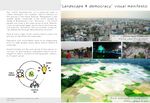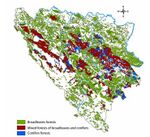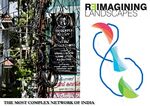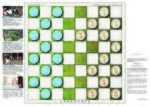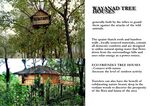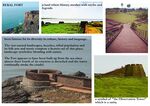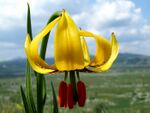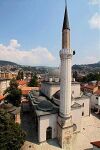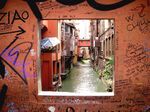LED Online Seminar 2019 - Working Group 5
--> Back to working group overview
Dear working group members. This is your group page and you will be completing the template gradually as we move through the seminar. Good luck and enjoy your collaboration!
Assignment 1 - Reading and Synthesizing Core Terminology
- You can read more details about this assignment here
- Readings are accessible via the resources page
Step 1: Your Landscape Democracy Manifestoes
Step 2: Define your readings
- Please add your readings selection for the terminology exercise before April 24:
A: Landscape and Democracy
Meinig, D. W. (1979): "The Beholding Eye: Ten Versions of the Same Scene." In: The Interpretation of Ordinary Landscapes: Geographical Essays, edited by D. W. Meinig and John Brinckerhoff Jackson, 33-48. New York: Oxford University Press. [Gianmarco]
Lynch, Kevin. (1960): The Image of the City, Cambridge, Mass.: MIT Press. [Amala]
B: Concepts of Participation
Hester, Randolph (2012): Evaluating Community Design, Landscape Journal [Gianmarco]
Day, Christopher (2002): Consensus Design, Architectural Press [Amala]
Sanoff, Henry (2014): Multiple Views of Participatory Design, Focus [Nafiz Rahat]
Sanoff, Henry (2014): Multiple Views of Participatory Design, Focus [Haris Pezic]
C: Community and Identity
Hester, Randolph (2006): Design for Ecological Democracy, The MIT Press [Nafiz Rahat]
Nassauer, Joan Iverson (1995): Culture and Changing Landscape Structure, Landscape Ecology, vol. 10 no. 4. [Haris Pezic]
D: Designing
Smith, Nicola Dawn(2012): Design Charrette: A Vehicle for Consultation or Collaboration [Gianmarco]
Pritzker Prize winning architect Alejandro Aravena on sustainable design and community involvement in Chile [Amala]
Massachusetts Institute of Technology (2013): Places in the Making: How Placemaking Builds Places and Communities [Nafiz Rahat]
Pritzker Prize winning architect Alejandro Aravena on sustainable design and community involvement in Chile [Haris Pezic]
E: Communicating a Vision
Steps 3 and 4: Concepts Selection and definition
- Each group member selects three relevant concepts derived from his/her readings and synthesize them/publish them on the wiki by May 15, 2019
- Group members reflect within their groups and define their chosen concepts into a shared definition to be posted on the wiki by June 12, 2019.
- Other group members will be able to comment on the definitions until June 30, 2019
- Each group will also report on their process to come to a set of shared definitions of key landscape democracy concepts on the wiki documentation until July 12, 2019
Concepts and definitions
Author 1: AMALA
- The book “ Image of the city”: by KEVIN LYNCH:The book consider the visual quality of American city by studying the mental image of that city which is held by its citizens.it concentrate especially on “ legibility “ of the cityscape: which is easily identifiable and are easily grouped.”building the Image” : the formal types of image elements into which we can conveniently divide the city image: path, landmark, edge, node, and district.” “Structure and identity”: an environmental image analysed into 3 components- identity , structure and meaning.” Imageability”.Analysis made of central areas of 3 american cities: boston, masaccuchussets;Jersey city, new jersey, los angeles, California.these casestudies are more about the character and structure of the urban image.The city image and its elements: edge, node, path, district, landmark.Analysis examples: beacon hill,scollay square.
- CONSENSUS VERSUS DEMOCRACY: definition of consensus is ‘general agreement; collective opinion [Latin = agreement (as consent)]’. Consensus design is about everybody getting – if not what they originally wanted – what, after working together and listening to the whole situation, they have come to want. In design, the ‘whole situation’ includes both buildings, the place where they’ll be and the people who will use them. Consensus is not an automatic state. We may start with full agreement on major aims, but over details this is rare. Buildings are built out of details. this is much fairer, more constructive and more conscious – so more fully involving – than voting- and this is the reason for preferring consensus to democracy. Reaching decisions: democratic or consensual routes.states of the questions such as Which level to start at?Existing situation: sequence of levels for consensus appraisal.Design stage: sequence of levels for consensus decisions.
- Alejandro Aravena:THE DESIGN POWER OF SYNTHESIS- the architectural philosophy- Bringing the community into the process.If there is any power in design it’s the power of synthesis.the more complex the problem the more the need for simplicity.three cases that apply here: 1: cities : the global challenge of urbanisation.3S-scale-to channel peoples own building capacity..scarcity and speed.solution of participatory design process: initial social housing by including the families: with the example of chile.two major things to do: joint forces and split tasks: different designs with the same principle.2:how design can contribute to sustainability.example of angeline innovation centre.3: how design can provide more comprehensive answers against natural disasters.example: chile-tsunami-First alternative is forbid installation on ground zero.Second alternative is build a big wall-heavy infrastructure to resist energy of the waves.the participatory design is –all about the future of the city.alternative was valid politically and socially.Second problem is flood-approach was against geographical threat.Design power of synthesis is trying to make a more efficient use of the scarciest resourses in the cities which is not money but coordination.its just an attempt to put at the innermost core of architecture, the force of life.
Author 2: Nafiz Rahat
- Concepts of Participation
The conception of public participation how it was started in 1960 in the USA in the landscape development process. Deliberate democracy is required to make people more aware of the condition to make them understand the value & interest of others. Multiple views of participatory is to bring the planners, architects, and general public & policymakers on the same platform to create a ‘co-design’. "Participation" objective is to conceptualizing the issues with all groups & analyzing the public reaction to proposed action policies. At the next step, it is necessary to move forward to develop strategic planning & visioning. 1. Setting goals 2 taking action 3. Evaluate result 4. Improved quality decision. Finally, a consensus is very important to implement all these decisions into reality.
- Community and Identity
Design for democracy is building an ecological democracy through the design process. It is about to remake American cities, know the American neighbors & indicate the community problems That helps us to sustain our liberty, our life culture & ecological system on which our life depends mostly. Ecological democracy is the best possible we can achieve through the combination of democracy & ecology. We have enabled the form to know our neighbors & resilient form to life, liberty & sustainable happiness. The design process must follow some ideas centeredness, connectedness, fairness, accessibility & sensible status seeking.
- Designing
Placemaking represents the identity of the local community depicting tangible & intangible heritage. We can learn from the essence of placemaking how to design a public space considering our previous experiences, how it works every day & connection between community & social spaces. “Placemaking is an act of doing something. It’s not planning, it’s doing. That’s what’s so powerful about it.” Fred Kent, Project for Public Spaces©
Author 3: ...
- ......
- .......
- .......
Author 4: ...
- ......
- .......
- .......
Step 5: Reflection
Step 6: Revised manifestoes
- please look again at your initial manifestoes and update them with any new aspects/prespectives you have taken up during this seminar
Assignment 2 - Your Landscape Symbols
- You can read more details about this assignment here
Landscape Symbols Author 1: Nafiz Rahat
Hadis Park, Khulna, Bangladesh One of the historical park in Khulna city Bangladesh. In 1925 Mahatma Gandhi gave his speech in this park.Later after independence this park became unused, dirty place & a zone of criminal activity day by day. In 2011, Khulna City Corporation (KCC) took innitiative steps to intervene in the park based on the demand of Khulna city people.
Solar Park, Khulna, Bangladesh. Which is also a good example of successful urban public space. People are coming frequently to pass their time & walk through the waterfront.Geo-Location: https://goo.gl/maps/9Ls4cSLUyMNfpbzT8
United nation park in Khulna Bangladesh. Last intervention has turned the park into successful urban public space. A landscape should belong to all walk of people. This is one of the examples. Geo-Location: https://goo.gl/maps/rZkkfbhCUhC4G3ui8
Landscape Symbols Author 2: AMALA
WAYANAD TREE HOUSES:generally built by the tribes to guard them against the attacks of the wild animals.The quaint thatch roofs and bamboo walls , locally sourced materials, contain all domestic comforts and are designed to utilize natural spring water that flows down from the surroundings hills and uses solar energy as a power source.ECO FRIENDLY TREE HOUSES:Connect with nature.Increase the level of outdoor activity.Travelers can also have the benefit of exhilarating nature beauty deep in the verdant woods to discover the prosperity of the flora and fauna of the area
BEKAL FORT:a symbol of "the Observation Tower" which is a rarity.It was an important military station for TIPU SULTHAN-the king and a land where history meshes with myths and legends-been famous for its diversity in culture, history and language.The vast natural landscapes, beaches, tribal population and its folk arts and music compose a heaven out of this place. landscape symbolise blending with nature.The Fort appears to have been built up from the sea since almost three fourth of its exteriors is drenched and the waves continually stroke the citadel.
LIFE CIRCLES IN CONNECTION WITH NATURE:pic1:The twig is the lifecircle of spider network. the spider creates the web in attached with the barks of the tree.its a natural landscape sysmbol well connected with the nature which indicates livelihood for the species of flora and fauna.pic2:the interior landscape picture shows the money plant in the green bottle murmering sounds like " she always provokes me to be seated and admire her presence.both the pics symbolise the correlation of nature and its elements.
Landscape Symbols Author 3: Haris
Lilium bosniacum:Lilium bosniacum is native symbol of Bosnia and Herzegovina. You can find it like picture on money, stamps, flags, etc. King Tvrtko I Kotromanic made him popular when Bosnia was the most powerful state in Balkans. It is also used as a flowering species because you can find a lot of variations, colors and shapes.
Gianmarco Gianni
FISHERMAN WIFE - (44°04'54.6"N 12°34'36.2"E) In Rimini is possible to find this statue made of bronze, placed at the tip of the dock facing the open sea. The statue represent a woman with children on the shore waiting for her husband fishing in the sea. The scene is drammatic.The woman is aiming a point on the horizon trying to figure out where the husband fishing boat is, probably hoping to to see him coming back safely to the port. Till the XIX century this kind of risks were a big concern for families, in fact the sails of the fishing boats were all different from each other in order to make them recognizable from the shore. Each boat had its own particular sign on the sail, smartphones and GPS weren’t available back then. Fishing had always been part of Rimini's culture since it's on the coast, but in the last years it started losing its identity because of massive tourism from all over Europe. This sculpture wants to remember us our past, our origins, the respect for tough jobs such as fishing and most of all the respect for the sea as a force of nature and as a resource.FISHERMAN WIFE
FINESTRELLA DI VIA PIELLA - (44°29'54.8"N 11°20'43.1"E)The Finestrella from Bologna can be considered as a symbol because it gives us a view from the past and remember us that we should preserve our environment and cultural background against an easy and irresponsible progress. Bologna between the XIII and XVII century was famous for the production of fabrics made of silk and had 15 watermills that were providing energy to move the mules. These watermills were powered by many rivers passing through the city. The city should’ve looked like an inland Venice. During the ‘50s the local administration decided to cover all the rivers and to release wastewater into them in the name of a quick progress. Since that moment Bologna changed completely its aspect. Only in 1998 the local administration started a new project with the intent to regain that lost beauty. The river we can see through the window is the Fiume Reno that was uncovered and cleaned from the dirt. Moreover the small window was placed to create an inspiring point of view and to give the sense of what it should’ve been.FINESTRELLA DI VIA PIELLA
BOLOGNA’S URBAN FABRIC - (44°29'37.9"N 11°20'33.8"E) Bologna itself and its urban fabric can be considered as a landscape symbol because, despite its monuments and so on, the main aspect that makes Bologna stand in the comparison with other cities is its urban planning. The will to preserve its medieval pattern throughout the centuries had always been part of citizens sensibilities. This includes materials, colours and many other features. Meanwhile in Europe at the end of the XIX century was developing a sense of discard to the past urban set up, Bologna instead found its own way to renew itself respecting its origins. The best way to experience Bologna in fact is to take a walk around the city center, enjoy its porches and be amazed by the continuity of its glimpses despite built in different periods.BOLOGNA’S URBAN FABRIC
Assignment 4 - Your Landscape Democracy Challenge
- You can read more details about this assignment here
- Each group member will specify a landscape democracy challenge in his/her environment
Landscape Democracy Challenge 1
- Give a title to your challenge
- Yourname challenge 1.jpg
caption: why did you select this case?
- Yourname challenge 2.jpg
caption: what is the issue/conflict (1)
- Yourname challenge 3.jpg
caption: what is the issue/conflict (2)
- Yourname challenge 4.jpg
caption: who are the actors?
Your references:
- ...
- ...
Landscape Democracy Challenge 2
- Give a title to your challenge
- Yourname challenge 1.jpg
caption: why did you select this case?
- Yourname challenge 2.jpg
caption: what is the issue/conflict (1)
- Yourname challenge 3.jpg
caption: what is the issue/conflict (2)
- Yourname challenge 4.jpg
caption: who are the actors?
Your references:
- ...
- ...
Landscape Democracy Challenge 3
- Give a title to your challenge
- Yourname challenge 1.jpg
caption: why did you select this case?
- Yourname challenge 2.jpg
caption: what is the issue/conflict (1)
- Yourname challenge 3.jpg
caption: what is the issue/conflict (2)
- Yourname challenge 4.jpg
caption: who are the actors?
Your references:
- ...
- ...
Landscape Democracy Challenge 4
- Give a title to your challenge
- Yourname challenge 1.jpg
caption: why did you select this case?
- Yourname challenge 2.jpg
caption: what is the issue/conflict (1)
- Yourname challenge 3.jpg
caption: what is the issue/conflict (2)
- Yourname challenge 4.jpg
caption: who are the actors?
Your references:
- ...
- ...
Your Democratic Change Process
- Add Title
- Your Democratic Change Process Slide1.jpg
caption: ...
- Your Democratic Change Process Slide2.jpg
caption: ...
- Your Democratic Change Process Slide3.jpg
caption: ...
- Your Democratic Change Process Slide4.jpg
caption: ...
Reflection
- ....
- ....
- ....
Conclusion:
- ....
- ....
- ....
Your references
- ...
- ...
- ...
